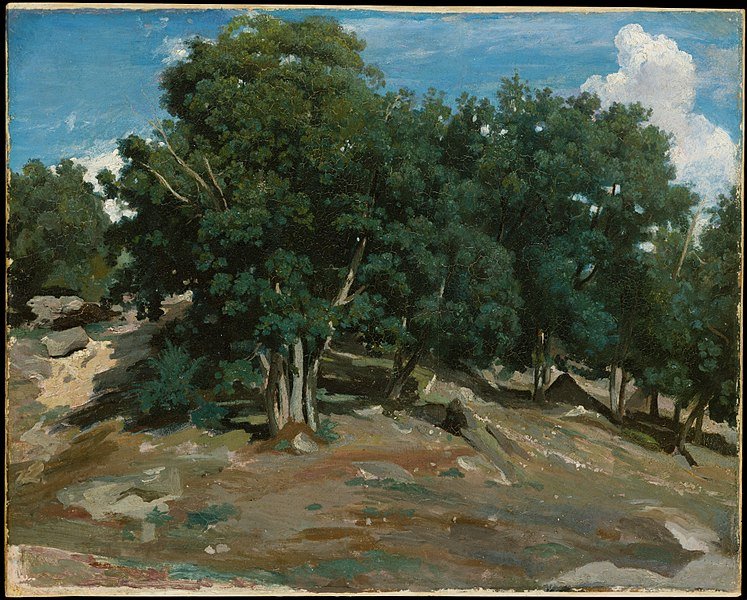The Met Museum
Copyist Program
FALL 2019
Corot Gallery
IN THE PRE-PANDEMIC FALL OF 2019, I was selected to participate in The Met Museum Copyist Program, a little-known but well-respected 150-year-old tradition and where I spent three months researching and painting a master copy of “Fontainebleau: Oak Trees at Bas-Bréau, by Camille Corot.” The “oak tree” sketch on paper appears again in the monumental biblical tableau to its right, “Hagar in the WIlderness,” (RIGHT). These large-scale allegorical salon paintings were exhibited by Corot in the 1830s and 1840s, and relied on his plein air sketches as a form of compositing process for his larger works.
Fontainebleau: Oak Trees at Bas-Bréau, by Camille Corot French, 1832 or 1833
I was captivated by Corot’s departure from his neo-classical training and exploration of plein air painting that preceded Impressionism.
Location. Location.



Gallery 803 is dedicated solely to the work of Corot' allowing one to become completely immersed in his world of landscapes, from allegorical to imaginary, many of which evoked scenes near his home in Ville-d'Avray outside Paris. The gallery also includes a collection of lesser-known portraits, and some were featured in the exhibition, “Corot: Women” at the National Gallery of Art (Washington, D.C.) in 2018. Somber in tone, these women could freely inhabit any of the landscapes on view.
IN AN ATTEMPT TO BE HISTORICALLY ACCURATE in process and materials, I researched pigments Corot may have used, my thanks go to VASARI Artists OIls Colors who helped select the color palette. I then painstakingly sketched and copied by hand (no projectors) on a gridded canvas (not paper) and while not the most expedient method, it set me on a slow course of examination and bonding with the “Oak Trees” as Corot may have experienced in the deep woods of Barbizon.

